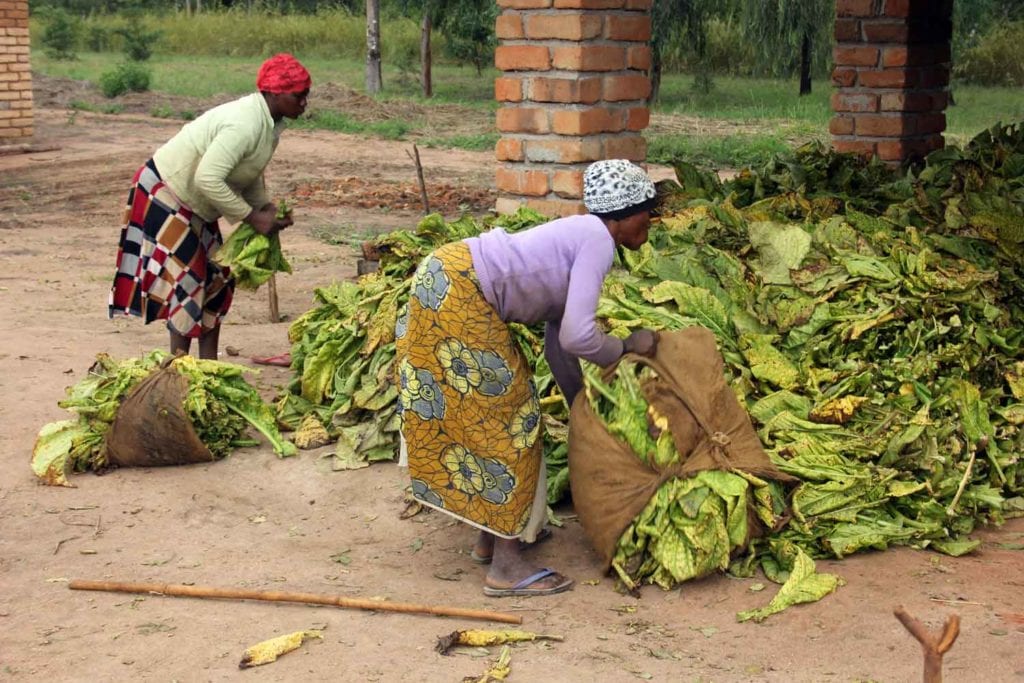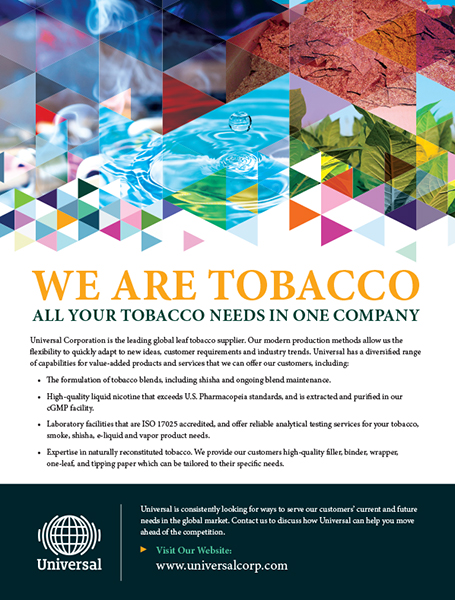Challenges to tobacco growing
During its issues day, ITGA also provided an overview of the situation in various leaf-growing regions. Mayiwepi Jiti, president of the Zimbabwe Integrated Commercial Farmers Union (ICFU), described the most pressing issues for her country. Zimbabwe has committed itself to the UN SDG to end child labor, respect the rights of workers and ensure workplace health and safety. Compliance with these practices, however, also increases growers’ cost.
The requirements hit an agricultural economy with mostly small-scale farmers who already face a decline in the production area from last year’s growing season. The Tobacco Marketing and Industry Board (TIMB) expects farmers to plant 150,000 ha of tobacco in the 2020–2021 season.
While school is compulsory, it is not cost-free. Many small-scale farmers cannot afford hiring labor and often rely on family instead. Underfunding leads to labor issues, while there is a lack of care for the farming communities. Profits for farmers are slim, whereas corruption is widespread. While Covid-19 has given Zimbabwe’s tobacco industry some insights on keeping children from auction floors, Jiti said, clean water and proper housing for growers should be made mandatory.
Heliodoro Campos Castillo, manager of the National Tobacco Fund in Colombia (Fedetabaco), related a tale of tobacco growers’ resilience in his country. Tobacco cultivation in Colombia decreased from 9,589 ha in 2011 to 3,550 ha in 2019.
Previously, the Colombian industry comprised small companies with established links to local communities. After multinationals started entering the market in 2006, many farmers had trouble adapting to the new systems and left the sector. Between 2011 and 2019, Fedetabaco initiated programs to improve housing conditions, food safety and the supply chain. Investments were financed by municipalities, the tobacco industry and institutions. In 2019, Philip Morris International (PMI) left the country; BAT will follow in 2021. PMI’s exit meant that 1,340 families lost the ability to cultivate tobacco, leading to an economic impact of $4 million. With support of the Department of Agriculture, famers were encouraged to diversify into crops such as lemons, manioc and corn.
The EU is home to 250,000 tobacco growers, families and seasonal workers, most of whom are in economically less-developed regions, explained Parszem Noworyta, secretary general of UNITAB, the international union of tobacco producers, explained. Tobacco cultivation secures farmers’ income as the regions where it is grown are often unsuitable for other crop or nonagricultural activities.
Throughout the EU, leaf tobacco production decreased significantly between 2009 and 2019. Reasons included higher production costs compared to countries outside Europe, the pressure on the tobacco industry and changes in multinationals’ purchasing policies, which involved reducing orders for European tobacco.
According to Noworyta, there are additional threats ahead, including illicit trade, regulation and EU resistance to financial support for tobacco growers. Meanwhile, the parties to the FCTC are talking about nicotine levels, alternatives to tobacco growing, and sustainability, among other topics, without involving the sector in the discussions.
Stabilizing tobacco cultivation and stopping the downward trend hence remains a struggle, according to Noworyta. Growers need to adapt to the market. One opportunity is seen in smokeless tobacco products. For UNITAB, Noworyta concluded, being a proactive force playing an important part in the debates of international and European organizations is vital to secure the future of European tobacco cultivation.


















 Lea Scott, vice president of agronomy services at Universal Leaf, called for tobacco growers to diversify to sustain their operations. Diversification, he said, could even include nonfarming activities, such as opening a Bed and Breakfast. Before diversifying, however, growers should carefully examine environmental conditions, skills and resource requirements, among other factors.
Lea Scott, vice president of agronomy services at Universal Leaf, called for tobacco growers to diversify to sustain their operations. Diversification, he said, could even include nonfarming activities, such as opening a Bed and Breakfast. Before diversifying, however, growers should carefully examine environmental conditions, skills and resource requirements, among other factors.




















